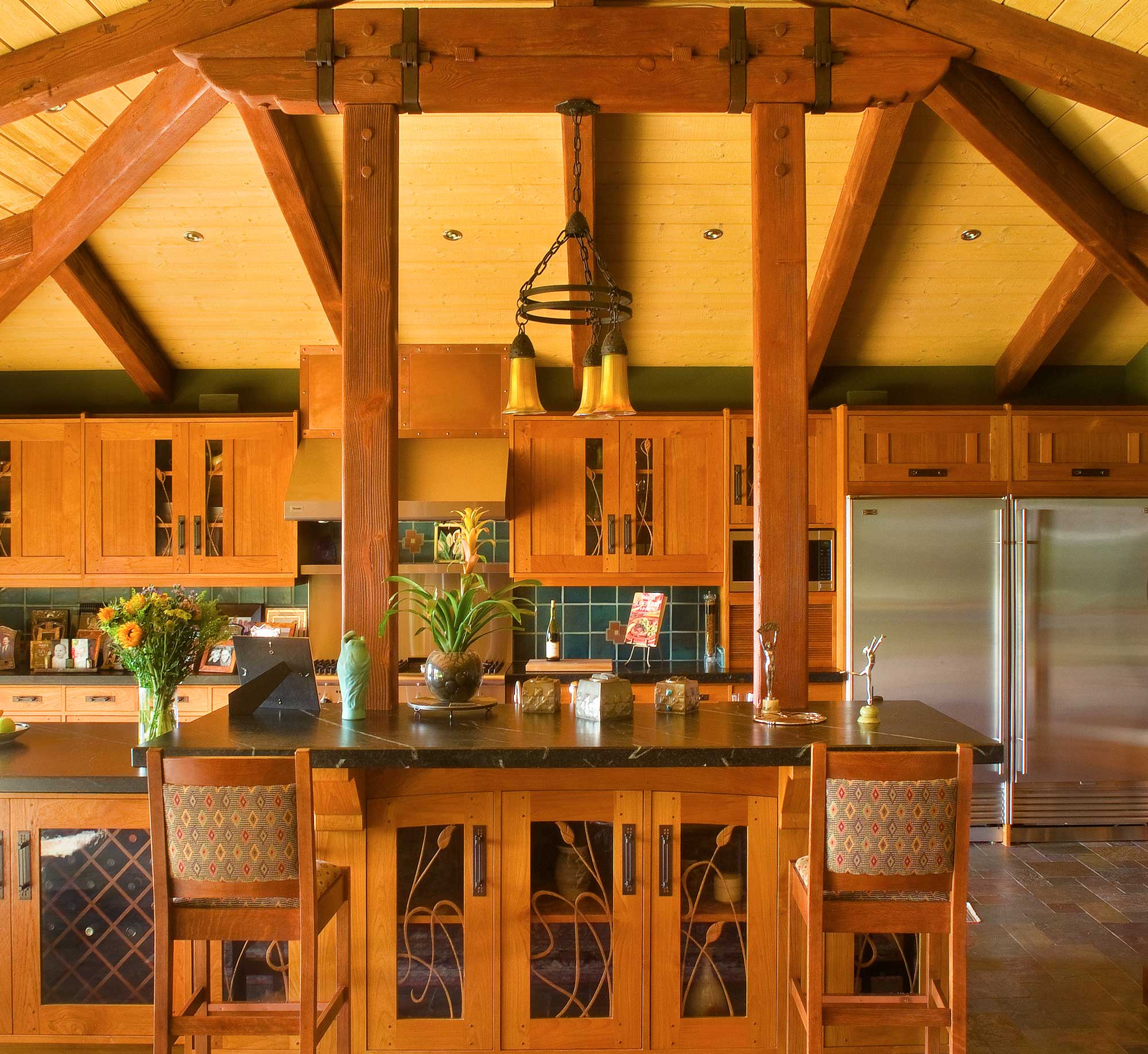
24 Jul Designing the West: California Dreamin'
Su Bacon has two passions in life: art and animals. Given the gift of artistic ability, she spent many hours as a child creating structures with Lincoln Logs, her favorite toy. Cabins, barns for her Breyer horses and all sorts of dwellings took shape with the help of her imagination and deft fingers. She also loved to draw, paint and doodle. At 5 years old, she officially began to hone her skills at an art school.
It wasn’t long before she did her first interior design job: her parent’s home. Her uncle, an architect in northern California, encouraged them to give Su a chance. “It is certainly challenging when you are living with the clients and they can also ground you,” Bacon laughs. The family home was a traditional Craftsman Style home, a perfect setting for the family who had been in California for five generations.
Testing the waters beyond art and design, Bacon got her degree in psychology and sociology, then worked as a paramedic in an all-rescue terrain team. Called back to the world of design, Bacon was heavily involved in the fashion industry for a number of years before buying Historic Lighting in Monrovia, California. “Like most stores that focused on Arts & Crafts revival, it didn’t have much of a direction,” explains Bacon. A year later she partnered with Ray Munson and their goals became clear. As with the original period, the artisan was pivotal so they dedicated a third of the store to craftsmen and their inspired work. The plan has proven very successful and allowed Bacon to explore her own passion for design. Though her design career has focused primarily on Craftsman, the Revivals and mid-century homes, Bacon has worked on a number of different projects throughout the United States.
The Western U.S. and its diverse styles and cultures have long been a source of intrigue for Bacon and she never shies away from being eclectic, believing that the combination of styles creates areas of interest. Monterey, Molesworth, traditional Western, California Mission and Craftsman are among her favorite styles and the most likely periods from which she draws. According to Bacon, the mixing of antiques, her clients’ private collections and the work of contemporary craftsmen will always lend classic style to any environment.
Bacon’s own artistic expression is evident throughout the store. Many of the fixtures in Historic Lighting are her original designs. Her penchant for period lighting has enabled her to create pieces that are true to the Arts & Crafts movement. These clever pieces are easily integrated into the interiors she creates, many of which illuminate pieces of traditional Western furniture. “I love the feel of a room when you dare to be eclectic. It is not that model home you visited, not a home that screams of a decorator. It is a home full of your treasures — treasures that [reflect] you and your family, not the choices of an interior decorator — that make you and your guests feel comfortable,” she explains.
The most critical element in Bacon’s design philosophy is to make sure the home speaks to the client and not of her own design. Client Sally Fisher thought Bacon succeeded marvelously to that end. “She is flexible, knows design and can bring a room to life. She wants to please the client, and in my case, she understood my taste and was willing to adjust, compromise and discuss choices until we had a superior result.”
Bacon’s home is a perfect example of her “breaking the rules” approach, which she says is the product of knowing them so you can break them: A cowhide couch and antique Buffalo Bill Cody posters mix easily with inherited Craftsman pieces and bold contemporary art. Home for Bacon includes three dogs, four horses, a crow and her 87-year-old father.
Su Bacon’s personal style epitomizes the casual elegance of the Western lifestyle. “You can come in and take your boots off or not, put your feet up and have a glass of wine … but most of all relax and enjoy yourself. You’re home,” she offers.
How to get the most out of a new design for your home
— Six tips from Su Bacon
- Make sure you feel very comfortable with your designer and that you and your vision are being heard and understood and will not be forgotten in the design process.
- Start collecting ideas for your design binder. Gather ideas from magazines and books, then organize them room by room.
- Make sure to mark clearly what you liked about each page, each idea. Was it the colors, the furniture, the trim and mill work, the window treatments or just the whole “look”? This is where the communication starts with your designer.
- When working with contractors, be as thorough as possible. Details, details and more details. Don’t be vague about what you want. What you don’t want to hear from your contractor is “change of order.” These three little words will cost you … BIG!
- Listen and be flexible when necessary, but never give up your dream … your vision.
- Find people that you like and can work with. You want this to be a good experience … don’t forget to have fun. You are creating the backdrop for your future memories … make them good ones!
- The Waterfall Chandelier is one of Bacon’s favorite designs. Inspired by Greene and Greene, she can adapt the piece for individual jobs whether it is a Frank Lloyd Wright feel or one with Spanish influence. The chandelier can have four lights or 13 depending on the need. “Most of my designs were created to resolve challenges and this is a perfect example,” says Bacon. “The Greene and Greene piece was cost prohibitive to use often and too beautiful to leave out.”
- Details make the difference in a sitting room off the main foyer. The lamp has a hand blown vase by William Morris with custom mica shade with leaf inclusions. On the antique hall cabinet is a Lily Lamp reproduction by Dale Tiffany with 12 different and exquisite shades. The floor is restored original white oak, and the carpets are from Persian Carpet Co.
- Bacon enjoys working with collectors and creating spaces that show off their pieces. For a couple who embrace modern art, and a contemporary approach to Craftsman style, she wove colors and patterns together to meld their individual tastes with style. In this living room, she used Batchelder Tile on the fireplace, a bistro table and chairs by Hile Studios and carpets from Persian Carpet Company. The glass coffee table is her own design created by artist Mike Devlin “so you can see the rug”, she says. The bench is by Elite Leather
- The formal English Arts & Crafts dining room with Tudor influence is beautifully appointed with the custom designed Waterfall Chandelier. Its richly colored iridescent hand blown reproduction globes from Lundberg Company are reminiscent of the era. The table and chairs are by Caledonia; carpets by Persian Carpet Co.
- Bacon was tasked with making this breakfast nook comfortable and flexible for the family of four who enjoyed their family time and entertaining. The built in benches are couch-like, the table is her own “light” Arts & Crafts design with a top that can go up or down for extended use as a buffet table.





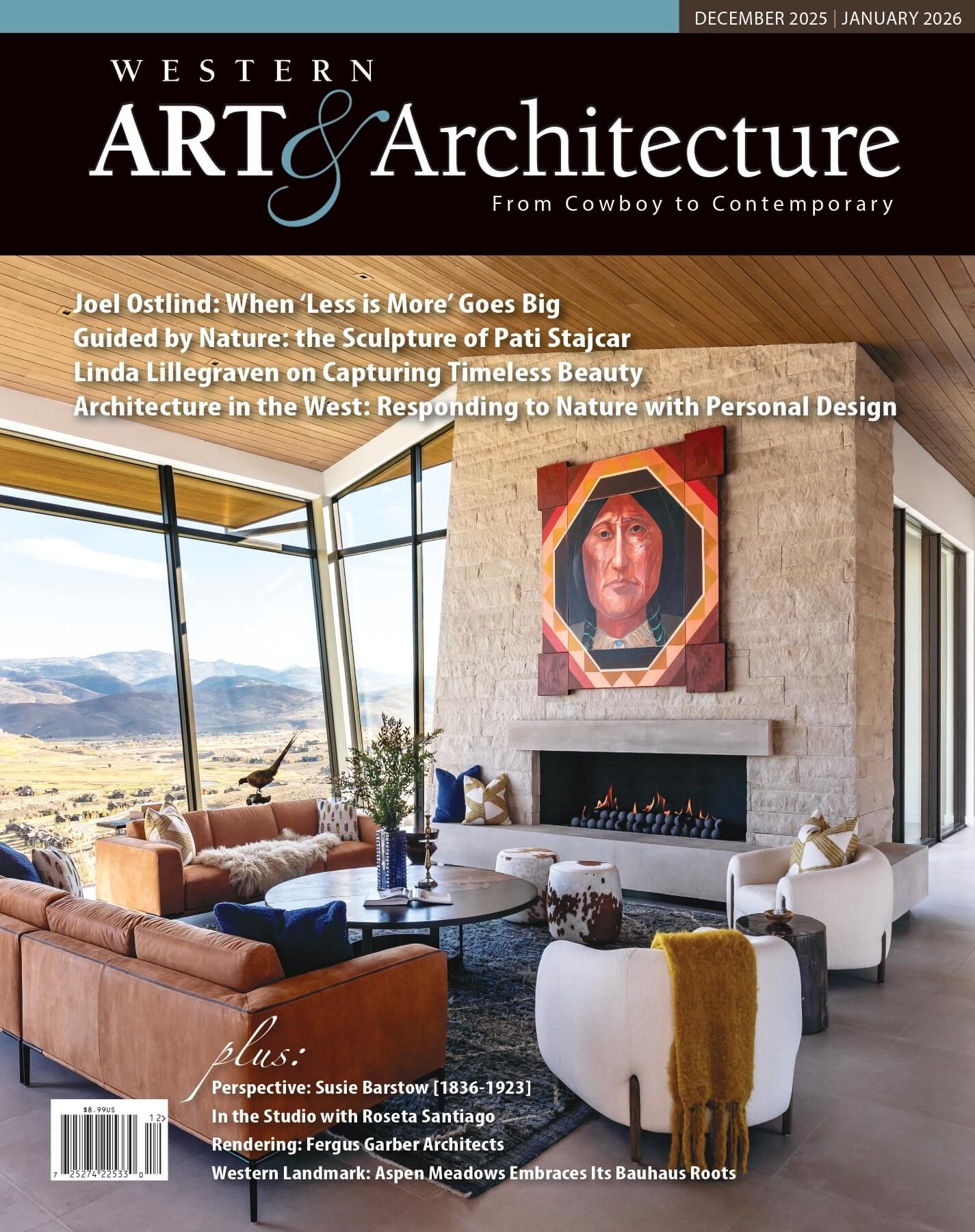
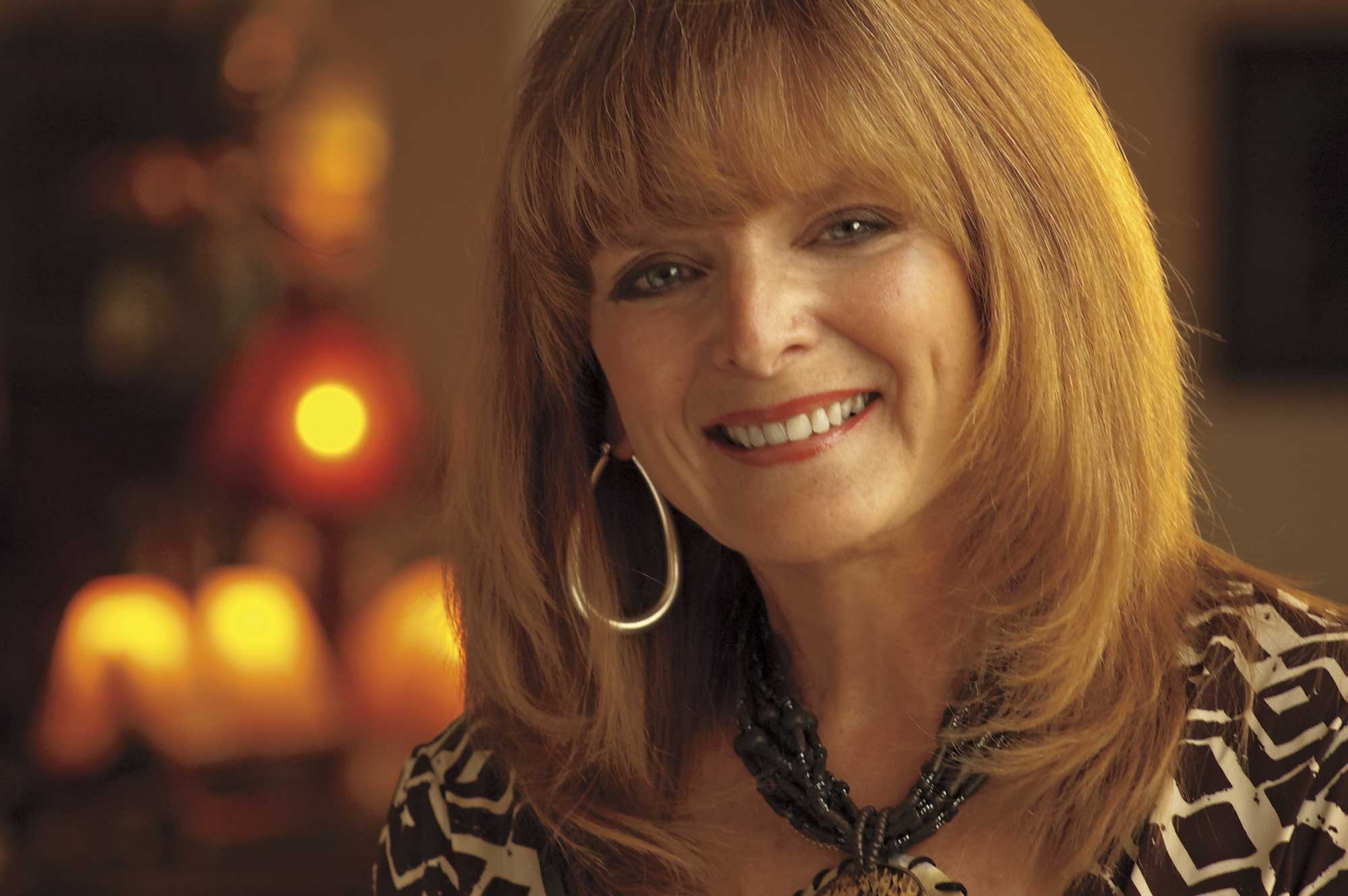


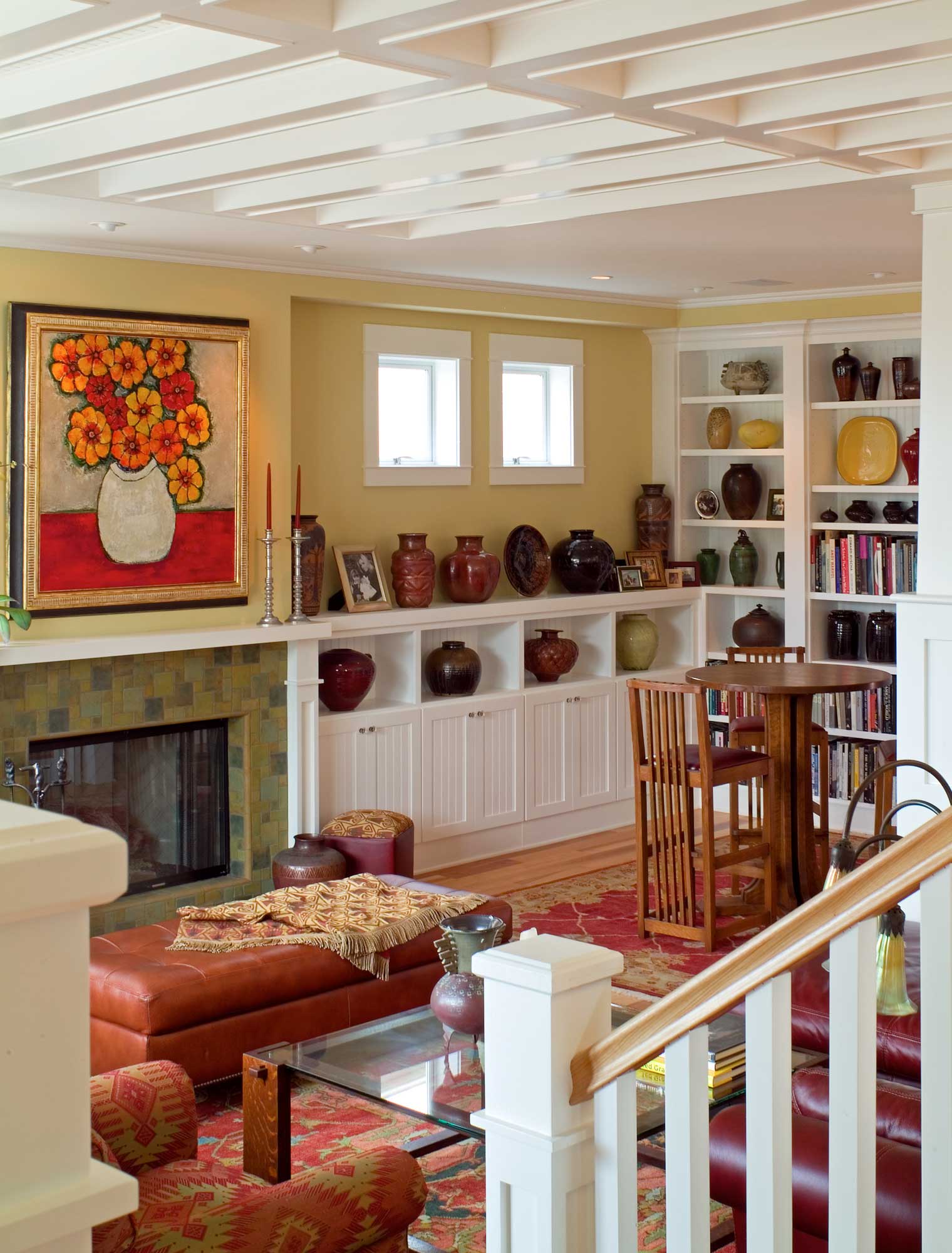
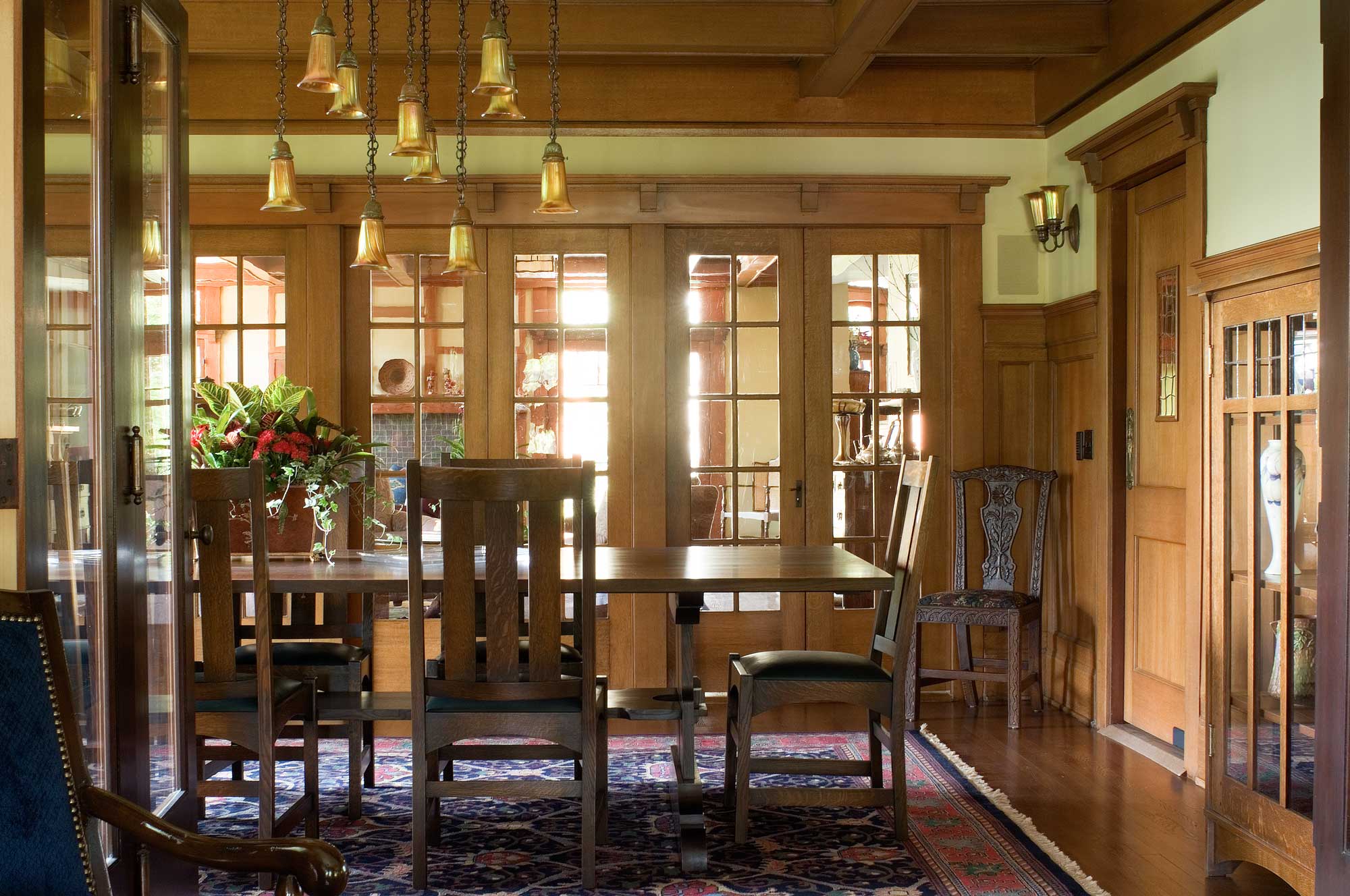
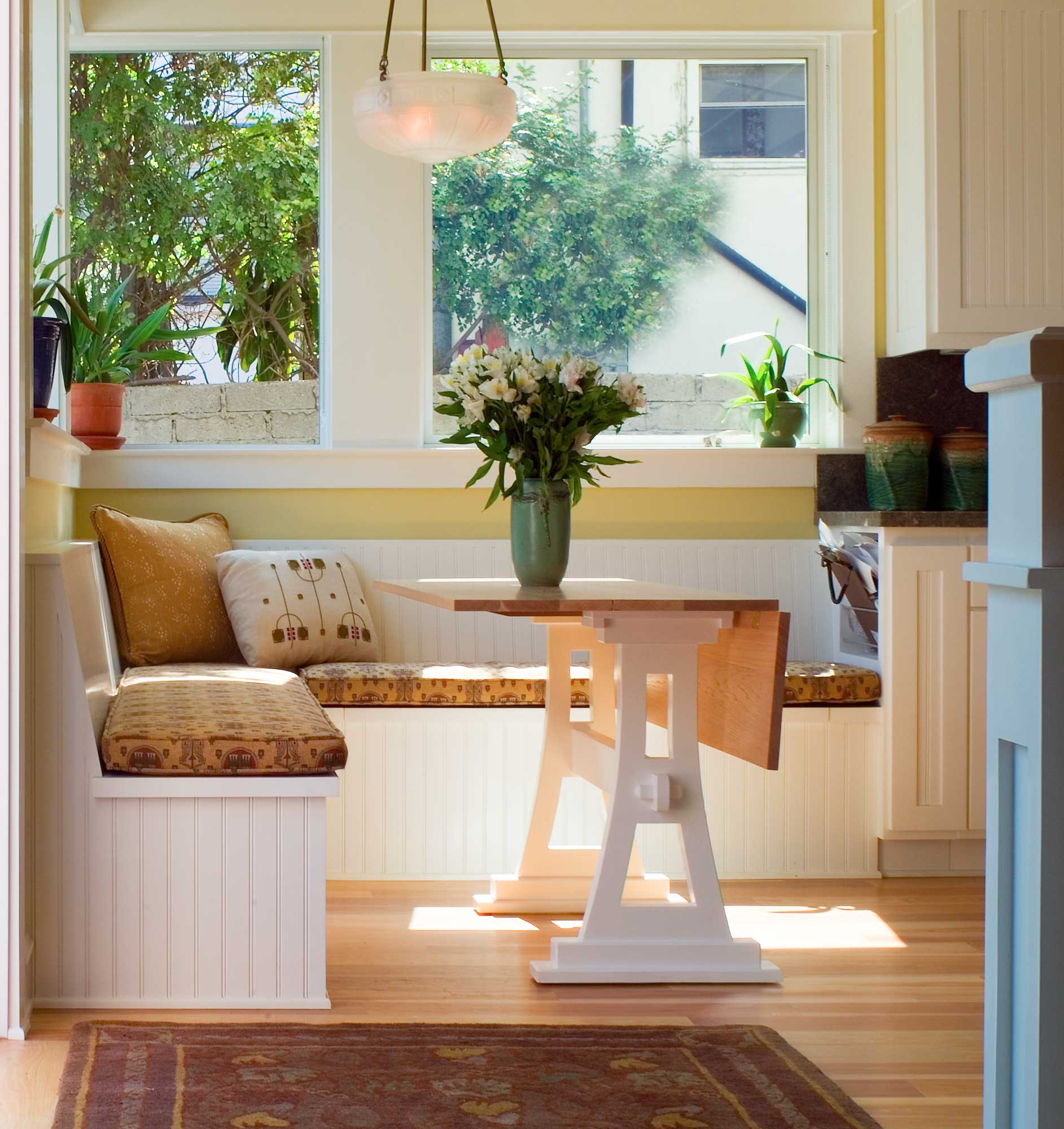
No Comments